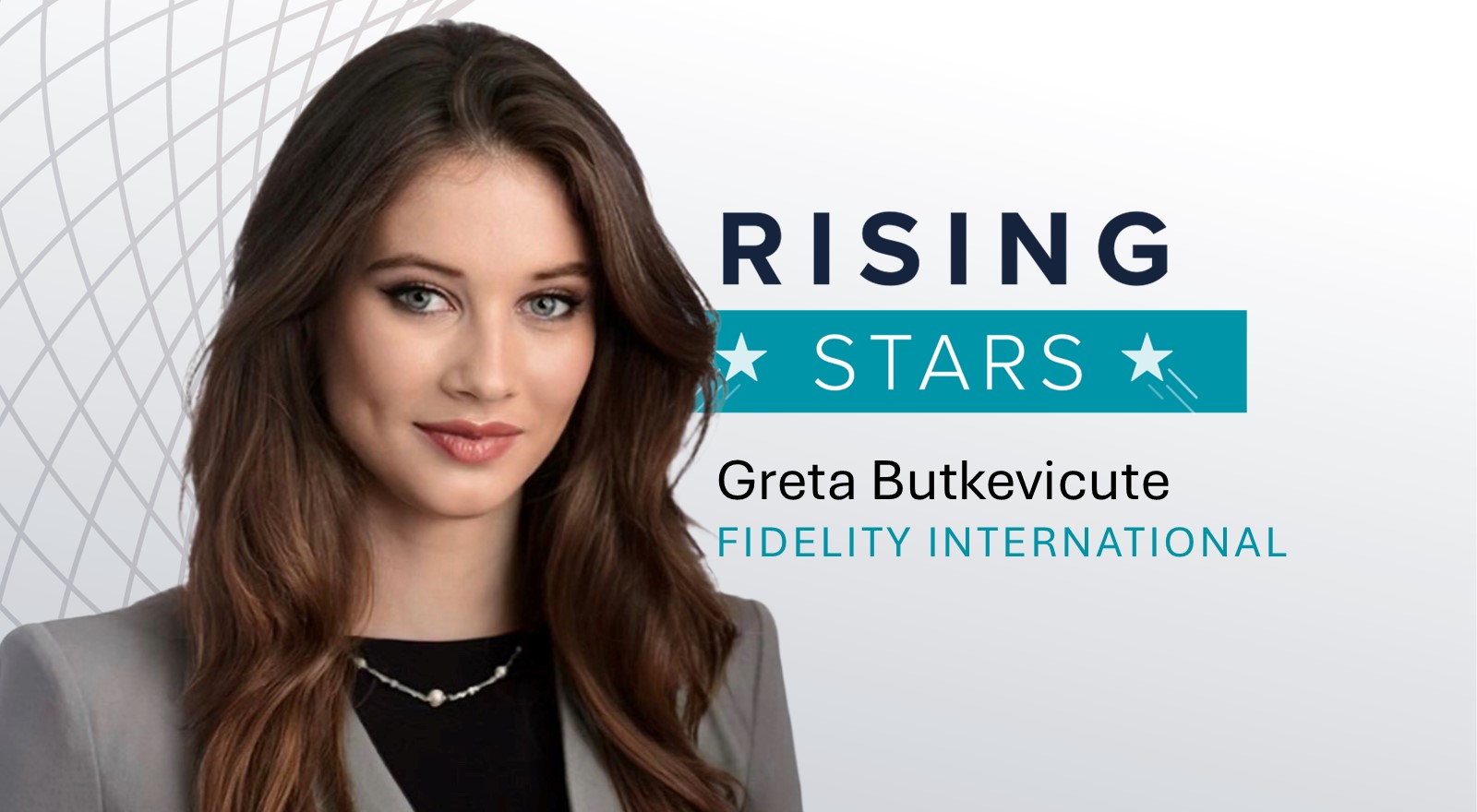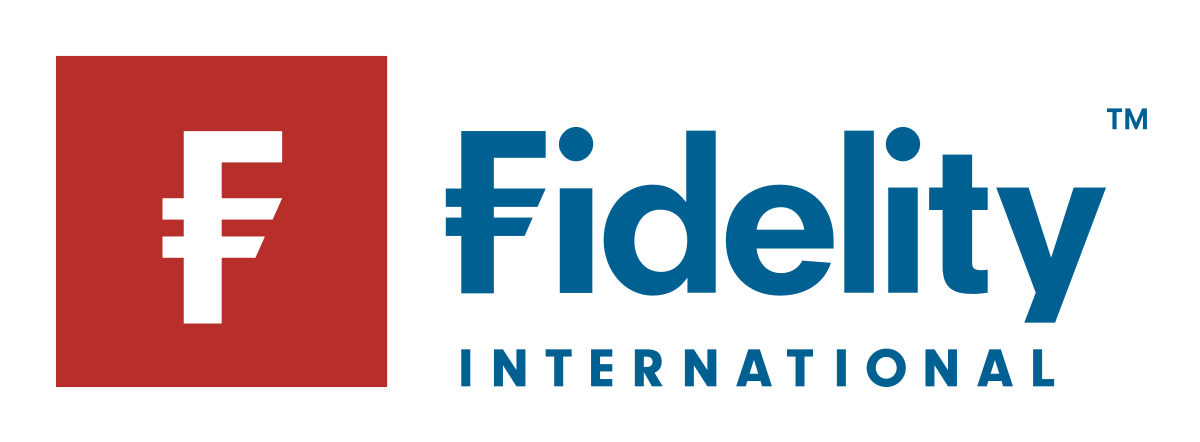The next instalment of our Rising Stars series sees Fidelity International multi asset research analyst Greta Butkevicute speak to ETF Stream about active ETFs, female role models, tango dancing and wanting to buy a Claude Monet painting.
How did you get into fund selection?
My journey into fund selection began while I was studying Economics at UCL. Along the way, I explored various internships across corporate law, management consulting and eventually joined Fidelity’s multi asset team for a summer internship. Of these experiences, asset management – particularly within the multi asset context – truly resonated with me, offering a great blend of dynamic, varied and academically rigorous research challenges.
During my internship, I had the opportunity to work with a senior fixed income research analyst, contributing my analysis on US securitised debt market. Although initially a daunting project, I had the chance to present my findings to senior decision makers, discussing whether it was a good time to re-enter MBS asset class and, if so, the best approach for our clients. I found this work incredibly stimulating and rewarding, knowing that my analysis would directly influence a key investment decision – and indeed, to my surprise someone referenced my paper four years later!
That experience cemented my interest and after graduation, I was thrilled to join the team full-time. Since then, I have really enjoyed the continuous learning – working across different teams from passive investing to private markets – and a chance to collaborate with some of the brightest minds in the industry, eventually leading fixed income manager research coverage myself. Fund selection has proven to be a great fit, combining strategic market insights with behavioural manager assessment in a constantly evolving landscape that keeps me engaged every day.
What is your role within your team?
I am part of the manager research team within the broader Multi Asset division at Fidelity International, where we manage around £40bn in assets under management (AUM) across multiple portfolios. In our manager research team of eight, we split our coverage primarily by asset class, where I am the key person responsible for fixed income manager recommendations and the internal buy-list monitoring.
My role has a very broad remit, covering all fixed income asset classes and recommending a variety of investment vehicles – from active UCITS funds to passive ETFs or systematic building blocks. Being manager research analyst at Fidelity is particularly rewarding, as I get to follow and challenge the thinking of some of the biggest Asset Management stars during our one-on-one review meetings. While it may be daunting sometimes to question investors with multiple more years of experience than me, I have found that some of the best PMs are genuinely eager to share their knowledge and engage in thoughtful, often challenging market discussions.
Multi asset is a highly dynamic team, so in addition to my coverage responsibilities, I work very closely with manager research analysts from other asset classes, as well as the tactical asset allocation team – which focuses on shorter-term trades – and portfolio managers directly. In working with these teams, I help blend different strategies and share investment ideas. This collaboration allows me to focus on top-down idea generation and portfolio modelling, ensuring my fund research remains relevant in the ever-evolving market.
What kind of investor are you?
It is not an easy question to answer, but when it comes to my investment decisions, I fundamentally prioritise consistent, bottom-up driven returns over big macro bets. I believe that a robust and disciplined process and strong risk management are essential elements of both manager selection and portfolio construction. That said, one cannot be oblivious to structural market changes – such as shifts in the credit cycle or central bank monetary policies. Although a nimble and risk-aware approach over the long-term is key, markets can wipe out significant gains if you end up on the wrong side of some mega trends.
That is why, when selecting great fund managers, we look for evidence that a manager has the ability to recognize these macroeconomic changes and the flexibility to adjust their portfolio accordingly in a timely manner. For instance, being positioned overweight duration was a profitable and popular strategy for much of the decade leading up to 2022. However, managers who failed to appreciate the impact of rising interest rates – and did not adjust their approach – ended up deeply in the red.
What is your top ETF pick and why?
I prefer selecting different ETFs for various sub-asset classes, rather than always going with a single provider or simply choosing the cheapest option. Lately, I have been particularly interested in understanding different active ETF propositions. Apparently, the term ‘active’ can mean a wide range of approaches – from basic re-weighted ETFs to those incorporating analyst ratings. In this space, I quite like our own Fidelity Sustainable Global Corporate Bond Paris-Aligned Multifactor UCITS ETF. While its name might be a bit of a mouthful, it is a great example of an active multifactor model with a strong sustainability overlay.
Who are your biggest role models?
On a daily basis, I am surrounded by some truly inspiring female portfolio managers in my team. Among them, Becky Qin, Sarah Jane Cawthray, Kirstin Irvine and Caroline Shaw have been particularly close mentors, and I am truly grateful to work alongside such strong, market-savvy and detail-oriented women.
Outside of finance, I am continuously inspired by the discipline and grace of some of the biggest tennis starts – Roger Federer or Carlos Alcaraz. Especially Alcaraz’s resilience and rapid rise at such young age always motivates me to push the limits!
What is a particular area of interest or something you enjoy within ETFs?
I particularly appreciate the flexibility that ETFs allow us when building portfolios. In the fixed income space especially, ETFs can offer clean, niche exposures across yield curves or specific countries. The liquidity, ease of access and broad range of options available from different ETF providers make them a great tool for executing shorter-term trades or gaining initial exposure to a theme while we research available active fund options.
However, one must always be mindful that ETF selection is much more than just looking at fees and AUM size. Especially for shorter term theme expression, benchmark differences, liquidity and trading spreads are all important factors to consider.
Where is a further development needed within the fund selection space?
Fund selection could really benefit from enhanced data transparency and consistency. Currently, comparing funds feels more like an art than a science, especially within fixed income, given the range of different attribution systems used by fund managers. As passive ETF investments continue to grow and asset managers increasingly blend these with active funds, I believe we will naturally see progress toward data standardization – though there is still a long road ahead.
Another essential improvement is greater gender diversity among fund selectors and portfolio managers. In our team, we are fortunate to have a fairly balanced mix, but when I attend industry events, I often find myself as one of the few women in a room full of suits. While this may reflect a broader industry trend, I see firsthand how a female viewpoint – especially in evaluating fund manager’s behavioural qualities or in refining processes – can really add a different and necessary perspective.
I am a strong advocate for increased diversity, and thus very pleased to have been selected for the Diversity Project’s Pathway Program this year. This industry-led, yearlong training programme is designed to equip female participants with the skills needed to become the next generation of portfolio managers.
What do you do when you are not managing portfolios?
When I am not managing portfolios, I am busy managing my two left feet on the tango dance floor! I also spend time playing tennis with friends and keeping my memory agile by learning languages – Hindi and Spanish are my latest challenges.
If you could invest in any fictional company from a movie, TV show, or book, which one would it be and why?
Great question! Sadly, many fictional companies are evil monopolies, but if I could choose one, I would go for Willy Wonka’s chocolate factory, hands down. Not only does it have a unique production line (chocolate rivers!) but also a focus on constant innovation and brand exclusivity. Plus, imagine the site visits! It would be a high risk (especially if Oompa-Loompa workers decide to unionise), high reward investment, but I would take a chance on the sweet potential!
Imagine you have a time machine that can only be used once to travel back in time for investment purposes, which historical event/time would you go to and why?
I might choose Paris in the late 19th century, just as the Impressionist movement was getting started. Imagine buying Monet’s Water Lilies for pennies!



